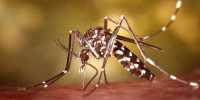In 1948, the state of Idaho solved two problems simultaneously: a beaver infestation and a parachute surplus from World War II. Shortly after the war, people began to move closer to Piet Lake in McCall, Idaho. For decades or even centuries, residential beavers there were soon declared a nuisance by the Idaho Fish and Game Department, who decided to rehabilitate them 314 kilometers (195 miles) away in the Chamberlain Basin.
Moving the beavers was no easy task. At that time, the practice was to go to them in the desert and load them on mules and horses. They were then transferred to a trapper truck, where they would be moved to a new location (in hot and dusty conditions) and once again loaded on a horse or mule and taken to their new home. The whole time they were operated by trappers, because they needed constant cold and water supply. Older beavers become quite playful, while beavers of all ages often refuse to eat. Elmo W. Heater of the Idaho Fish and Game Department wrote in 1950 in The Journal of Wildlife Management, “Horses and mules stink like fights and become as fierce as fights.”
“These issues involve further handling and may lose beavers very often.” A solution was needed and Heather believed the solution was to throw the beaver off the plane. Thanks to Beaver, it was given a little more thought before it became a jetsion at 4,500 meters (15,000 feet). To begin with, the beavers had to be heavy enough to open the parachutes, which can be easily solved by increasing the weight of the container holding the beavers. The next problem was how to place the beavers inside a box? It flies towards the ground at terminal speeds and yet it is easily removed when they land gently on the ground.
Their first solution was to make a box of beaver food. The woven willow boxes would land, then the beavers would come out of them somewhat, however, this method was abandoned when it was discovered that beavers could soon chew their way out of these boxes and become loose on the plane or fall out of a box during a drop , “According to Hitter. The next solution was better, because the life of animals does not depend on refraining from their snacks. One container was placed inside the other, and a series of ropes were used, which would release the beavers when they reached the ground, and tension was released from the rope.
















